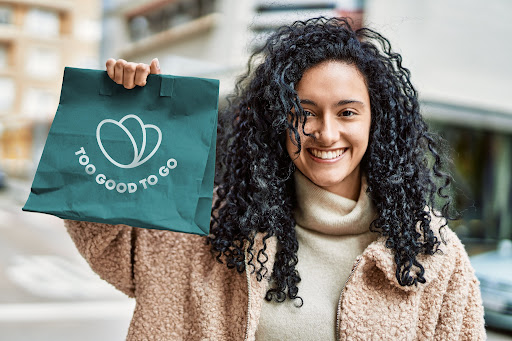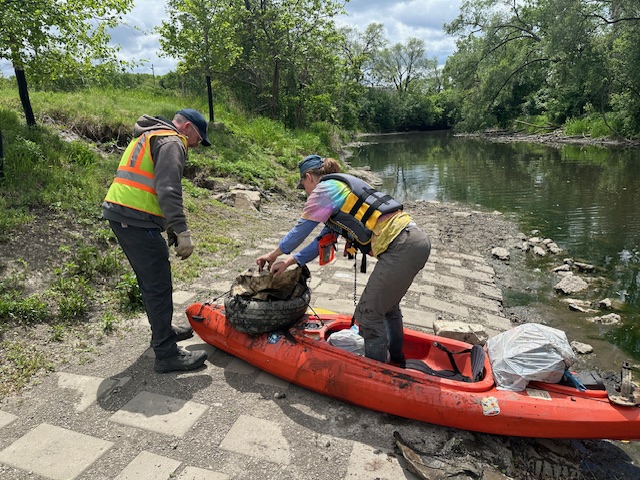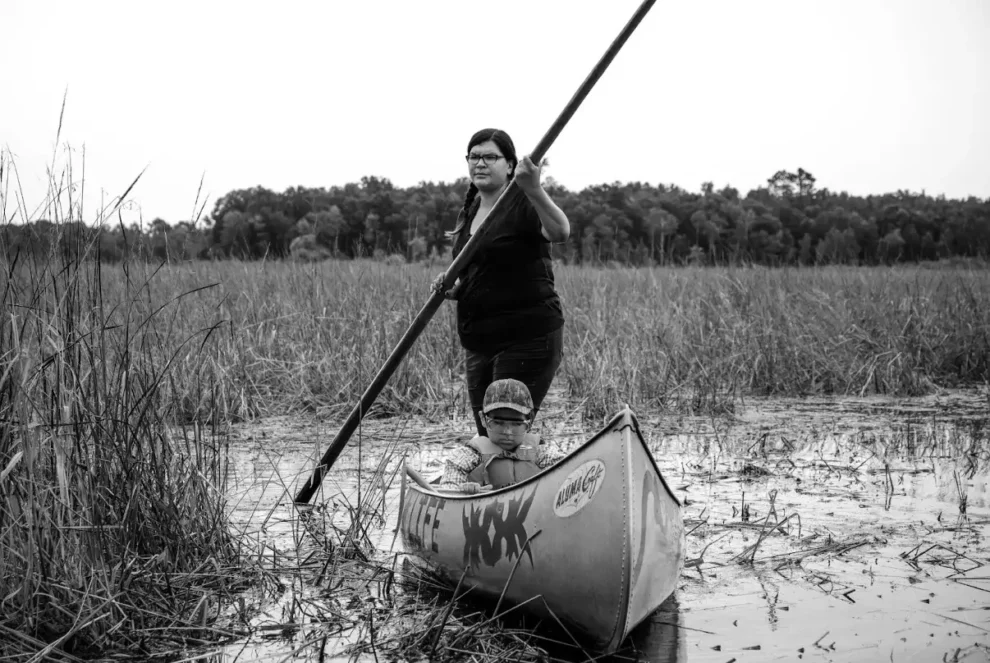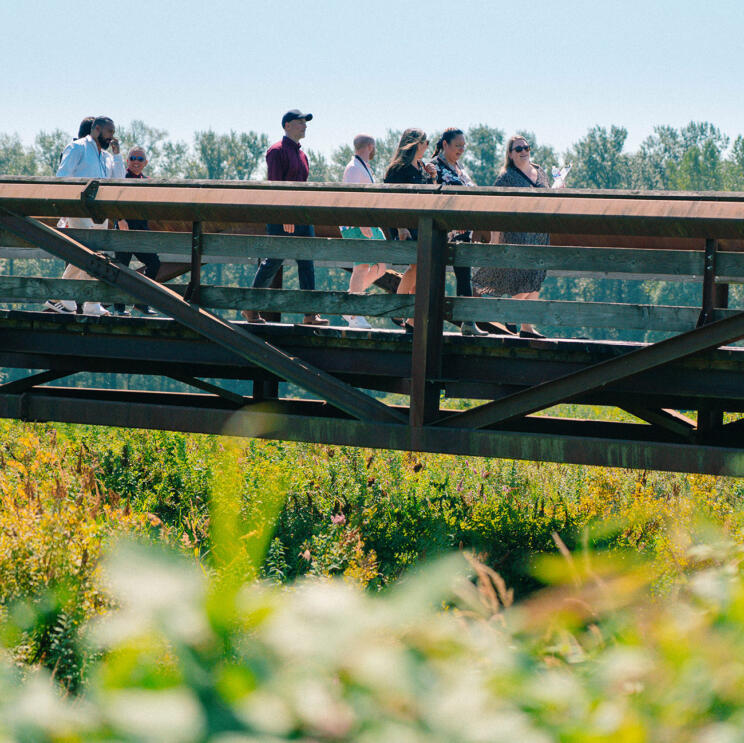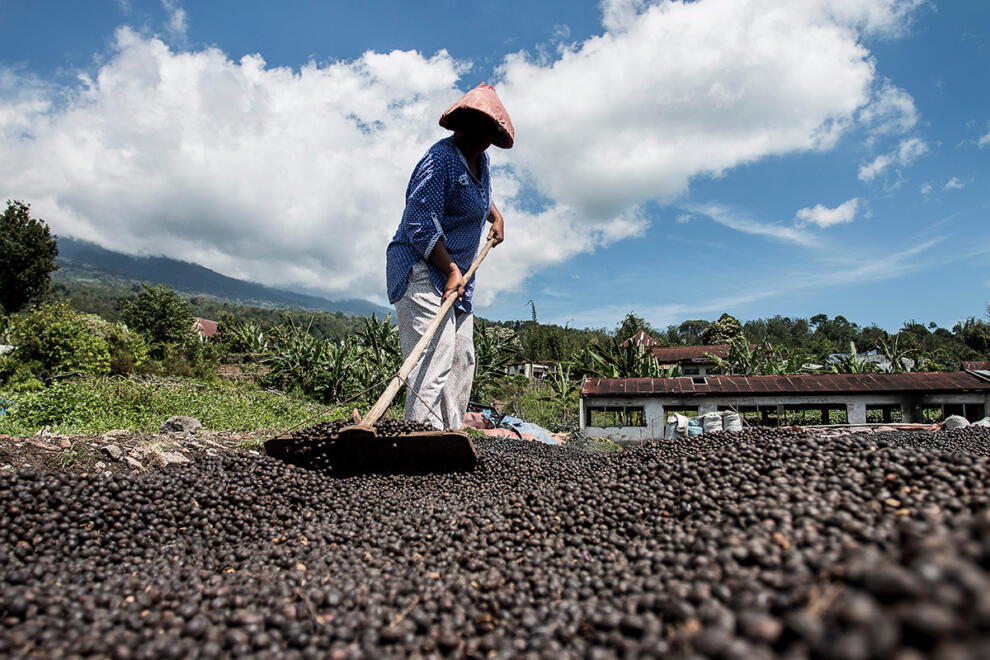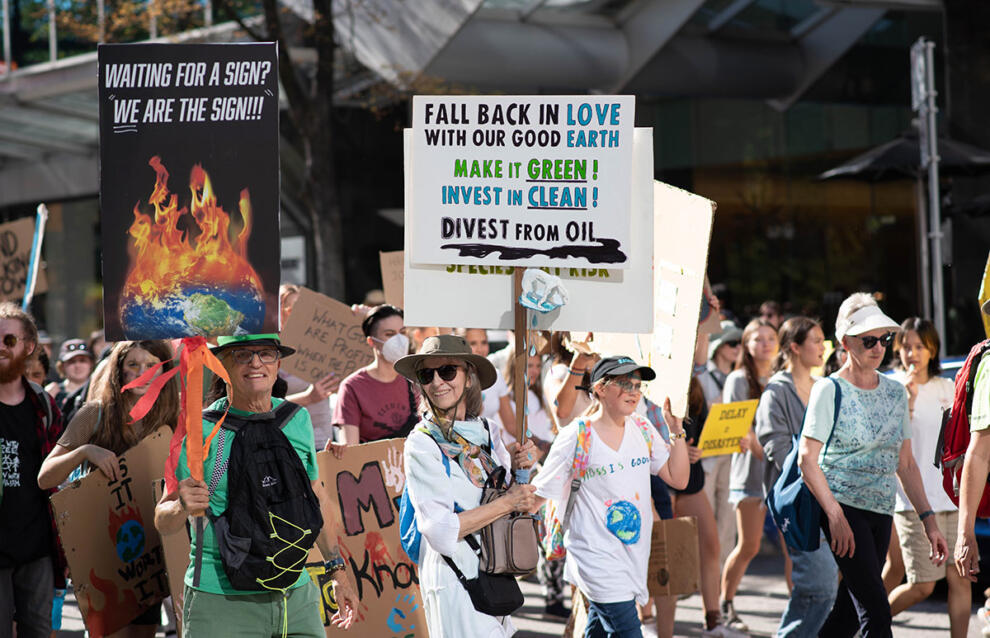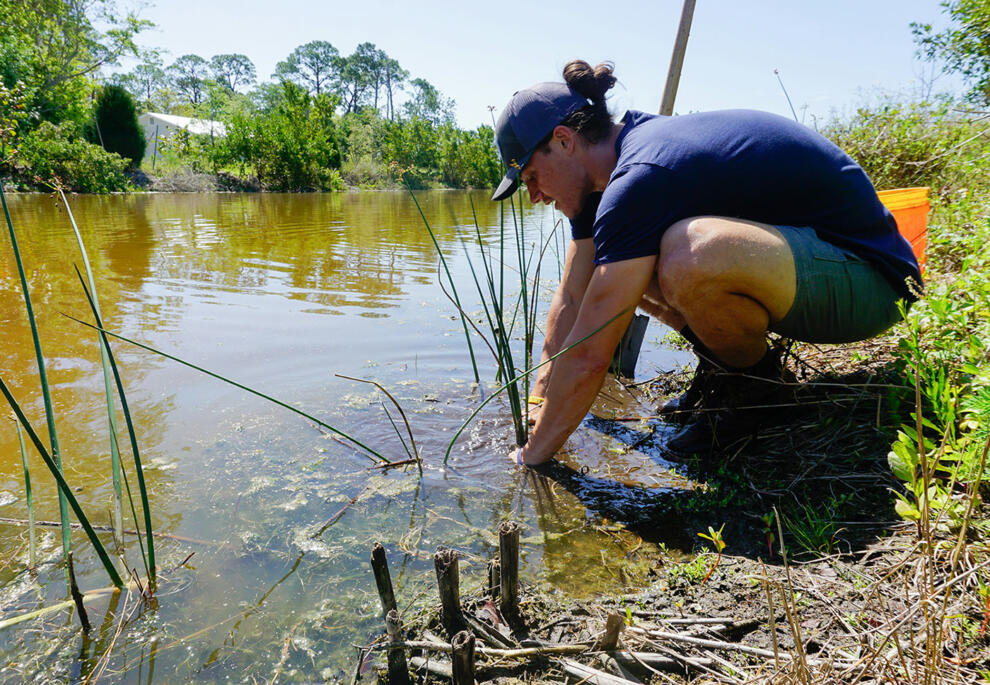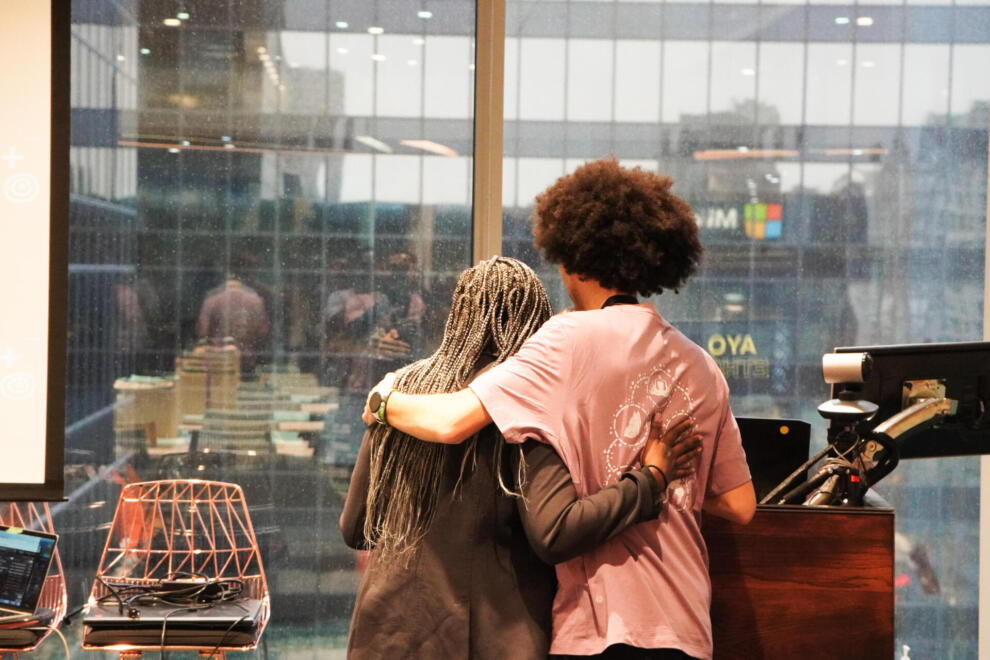Fighting food waste, one surprise bag at a time
The following interview has been edited and condensed for length and clarity.
Food waste is a dire reality. Worldwide, humans waste about 2.5 billion tonnes of food every year, according to a recent report from Recycle Track Systems . While there are many perpetrators, from industry to supermarkets, everyday consumers are also a big part of the problem. A study from Penn State University found that Americans waste 30 to 40 percent of their edible food. In Canada, it’s even more – 63 per cent of food thrown away could have been eaten, reports the National Zero Waste Council.
Across the pond, the European Union wastes more food than it imports, costing €143 billion a year and contributing to at least six percent of the EU’s total greenhouse gas emissions, reports FUSION EU.
To address this issue, Too Good To Go launched in Copenhagen in 2016. The company’s main tool is a mobile app that allows restaurants and shops to list unsold but still edible food for people to purchase. Today, the company operates in 17 countries. As of 2023, more than 70 million users and 200,000 establishments have signed up, and 260 million meals have been collected and saved from landfills.
We got the opportunity to chat with Sam Kashani, Too Good To Go’s country manager for Canada. A first-generation immigrant living in Toronto, Sam works to empower Canadians from coast to coast to join the fight against food waste.
ROC Thanks for joining us today, Sam. Can you start by telling us more about Too Good To Go and how it works?
Sam Absolutely. We’re a simple app that connects consumers with stores that have surplus food left at the end of the day. So, as a consumer, you can use our app, discover your local neighborhood, and reserve what we call a ‘surprise bag’ — a collection of surplus food that a business has left at the end of the day.
It’s truly a win-win-win.
Users win because they get healthy, delicious food at one third of the price. So great, great, value, especially in light of inflation and the pinch we’re all feeling on our wallets. Businesses win because they drive incremental traffic to the store and incremental revenue on food that they otherwise would end up throwing out in the bin. And, most importantly, the planet wins. Being a social impact company, the reason for our existence is to dream of a planet where all food produced is ultimately consumed, thus reducing food waste.
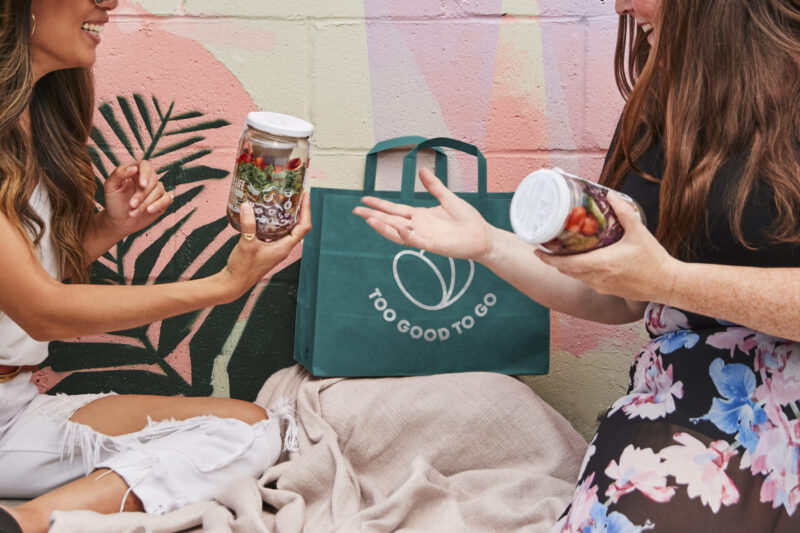
ROC What are the top suggestions that you give to people about how they can reduce food waste?
Sam Be very intentional with your grocery shopping. You know, make lists and [don’t buy] that broccoli (or whatever it is that gets stuffed in the back of the fridge then you take it out and it’s completely molded and you’re like, “oh shoot, I forgot about that.”) So have that intention.
The other piece is to make food visible in your fridge. It’s super, super important. When you see food, you use it. [For example], take your herbs and put them in glass containers and jars, so they last a lot longer.
Take food out of plastic, which significantly reduces the life of food. Obviously, try to eliminate single-use plastic.
Educate yourself on best before dates. We encourage the mindset of ‘look, smell, taste before you waste.’ Some consumers feel uncomfortable with that, and we do our best to educate them. In Canada, there’s a very different mindset around best before dates — many people are concerned about them, even though those dates are really a manufacturer stamp that’s more focused on delivering sales at peak freshness than on protecting consumer safety and health.
We have a recipe book available on our site that inspires Canadians to take leftovers and remix them into fun recipes. Stale bread can be turned into chocolate chip cookies. There’s so many different things we can do to be a little bit creative with using leftovers and surplus food.
ROC Do you have links to these recipes and resources on your website?
Sam Yes, we have more than 70 recipes on our blog from our wonderful partners. The chefs we work with have helped us demonstrate what it means to be waste conscious. And ultimately, we all win, right?
ROC Is there a top challenge that you’re facing locally and internationally? Is there something that comes up across the board?
Sam The biggest challenge that I face is awareness. My personal vision and mission is to eliminate food waste and single-use plastic. We’re in the process of adopting change: now we pay a little for plastic bags at grocery stores, and many places around the world have eliminated single-use plastic. Other companies and quick-service restaurants have promised to reduce and eliminate [plastic] from their businesses.
If I walked down a street and asked a Canadian if food waste was an issue, I guarantee you that most — if not all — would say, “no, what are you talking about? Food is abundant and accessible,” without knowing the repercussions that accessibility causes in the supply chain. Most of us, when we see an avocado that’s brown, we throw it out. It takes 16 or so gallons of water to be able to produce a single avocado. If you were to pour 16 gallons of water before you throw the avocado out, you would think twice about it.
Canadians are starting to think about food waste as an issue but we have such a long way to go.
ROC Are there any countries that are doing this better than Canada or the U.S.?
Sam I’d say Europe as a whole, but France is a great example. You know, when you get a cucumber and there’s plastic around it, right? They’re eliminating that. And they have bylaws around waste in restaurants — for the waste that they create, they have to pay a fee and charges for it.
In Canada, we’re advanced in a lot of ways. Yet, due to regulation, and due to many other aspects, we’re not at a point where we’re actually leading the way. In fact, we’re actually one of the worst in the world, when it comes to food waste.
One thing that really irritates me is the Government of Canada’s website. Health Canada says, “if in doubt, throw it out.” That’s coming from the most senior body we look up to with respect to regulation, health and safety and their guidance is, “if in doubt, throw it out.” Why should we expect an average Canadian to actually behave any differently? So we have a long way to go, is what I’ll say. And really, over the last year and a half, food advocates have done wonderful work to raise awareness, and ultimately have an impact. And for us at Too Good To Go, we have a pretty bold ambition and we continue to raise awareness and work to democratize the fight against food waste.
ROC We know that the International Day of Awareness of Food Loss and Waste is coming up September 29th. What are your plans?
Sam It’s awesome that you know of the day. Internally, we refer to it as “IDA-FLAW”, which is the acronym for it. The day isn’t widely known, unless you’re in the industry or you’re very connected to it. So, our intention is to make it more known and to point a flashlight — hopefully a spotlight — on this day, because it’s these types of initiatives that really start to change lifestyles and mindsets. We have a campaign plan and the team is feverishly working to make sure that we’re polished, ready to go, and telling the world, “hey, this is the time to take that extra step.”
ROC I know that you’re Canada-based. Are there similar issues and initiatives to address them in the U.S.?
SAM The problem is global. However, the way in which we go to market, connect, and tell our stories is a little bit more local. There are things that we do across borders, and there are things that are focused on really speaking to Canadians’ hearts and minds. We are operational in more than 20 cities in the U.S. and we’re are now in every major city in Canada and really fighting the same fight there.
So, while what you see in the U.S. may be slightly different than what you’re seeing in Canada, as a whole, that all adds up into one singular ambition, which is reducing food waste.
ROC How does Too Good To Go operate differently in Europe, where it originated?
Sam In Europe, we have over 1,000 products in the Too Good To Go app. And that puts a ‘taste before you waste’ label right beside the best before date. So, just think of the impact. When you open your fridge and take out a yogurt — right now, you see a cryptic, machine-printed code that you have to decode to understand what the date is. And then once you’ve decoded it, you’re probably checking whether it’s a day before or a day after. Imagine that check being done in a more responsible way, catching them in the moment with a link to educational information.
Again, I think it requires time to feel that level of comfort. It also requires education and awareness around how important this issue is: food waste is responsible for 10 percent of greenhouse gas emissions. It’s an issue with solutions that help with food insecurity, with inflation. The fact that we’re producing food, but just throwing it away? — that gets a bit frustrating. Let’s change.
ROC How do you get more engagement and involvement from restaurants and businesses?
Sam It’s a combination of efforts. We have a partnership team that engages with individual businesses and with headquarters, depending on their structure. We have a lot of established restaurant brands that reach out to us.
So, for a bakery that opens up in the morning — they can save and sell surplus food that evening. It’s honestly that simple. And the more we have conversations like this one and raise awareness around food waste, the more businesses are inspired to take action.
We have a tool and a solution.
Food waste is such a complicated problem. But if we approach it with a complicated solution, solution adoption is very low. So our intention is to keep it as simple as humanly possible to make a dent, make an impact. And, over time, we’ll continue to focus on making sure that we’re tackling the problem at all stages.
ROC I’m in Vancouver, Canada and I moved here from Chicago. It’s been interesting to see how the two cities differ in their approaches to recycling and food waste.
Sam It’s different by city, by geography.
Canada, as a whole, has been very quick to doubt Too Good To Go. When I joined the company, I had a moment of pause, thinking, “look, another technology platform.” But we have more than 7,000, including some wonderful brands that have thousands of locations. And they get it.
ROC Is the next step in Canada getting in front of government and getting legislation passed?
Sam Absolutely. I think there’s already some wonderful organizations that are really pushing there. And we are happy to join. For us, it’s been a fast and feverish year. As we think of 2023 and beyond, I think we’ll continue to see increasing adoption and we’ll build the movement and democratize the fight. But certain things — like, “if in doubt, throw it out” — need to change. Changing legislation and the mindset of legislators? That’s a longer and more uphill battle. That’s the hard work ahead of us.
ROC I learned about Too Good To Go a couple of years ago. At that time, you were in the U.K. but you hadn’t moved to North America yet. So, I was really excited to hear about your expansion.
Sam Yeah, it’s been fast and furious. But honestly, I wouldn’t have it any other way. Keep an eye out for us. I think we’ll continue to make some great strides in fighting this fight. And, as 2023 rolls around, I think we’ll continue to have a meaningful impact from coast to coast.
Learn more about Too Good to Go and find out where you can rescue unsold food from your favourite stores and restaurants.
Check out their instagram or #idaflw in the lead up to International Day of Awareness of Food Loss and Waste on September 29.
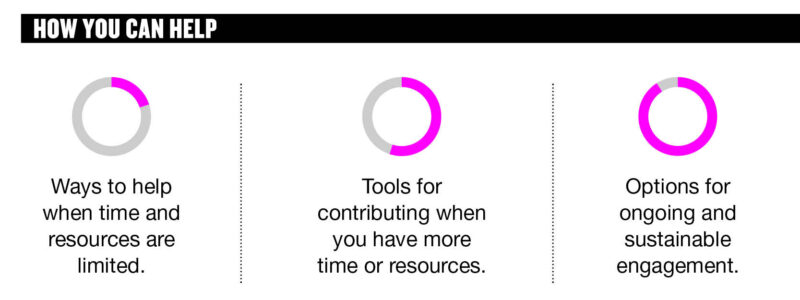
HOW YOU CAN CREATE IMPACT:

READ books Cook More, Waste Less: Zero-Waste Recipes to Use up Groceries, Tackle Food Scraps, and Transform Leftovers by Christine Tizzard.

SAVE ‘ugly food’ from landfills through organizations like Imperfect Foods and Misfits Market.

DOWNLOAD the Be One To Give app to help reduce food waste and start a similar initiative in your city.
Purchase Issue 03
After a year of chaos and uncertainty, our mission for ISSUE 03 of RIPPLE OF CHANGE is to spark inspiration in our readers. There was a lot of talk of coming together, acting in solidarity for our peers, and putting others before ourselves to overcome the challenges put before us. Now, we put that to the test.
Order your copy of Issue 03 today!

